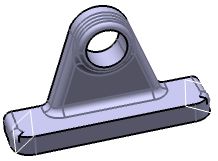You can partially remove some faces using limiting elements. This particularly
helps you to locally modify a fillet.
Click Remove Face
 again and select the face as shown to remove it, in the Remove
Face Definition dialog box.
again and select the face as shown to remove it, in the Remove
Face Definition dialog box.
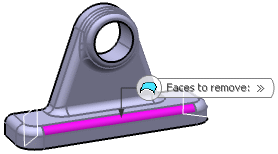
Click More>> to define limiting elements
for the removal of the face.
The Remove Face Definition dialog box dialog
box is expanded:

To determine a face to limit, right-click in the
Faces to Limit field and select Create.
A new Faces to Limit dialog box appears.
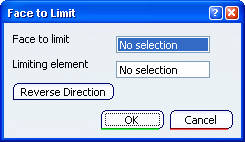
In the Face to limit field, select the face
as shown.
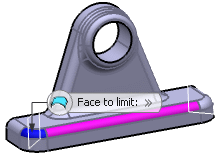
In the Limiting element field, select the
plane as shown. The arrow indicates the side of the face to be removed.
Note: You can click Reverse Direction to
reverse the direction of the face to be removed.
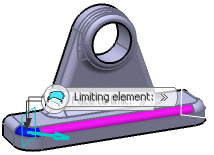
Click OK to confirm the first limiting element.
Repeat step 3 to 5 to create another limiting face as
shown.

Click OK to confirm the second limiting element.
The face is partially removed up to the limiting
elements depending on the defined direction. The new feature
identified as RemoveFace.XXX is added to the specification
tree.
